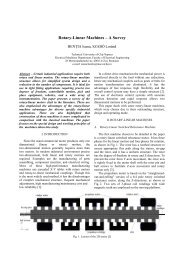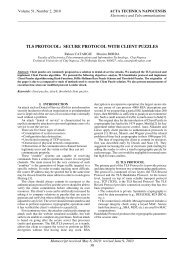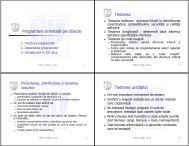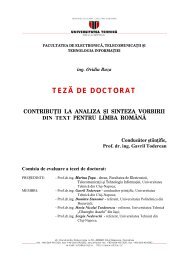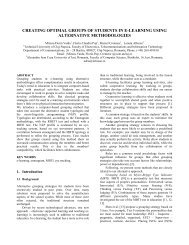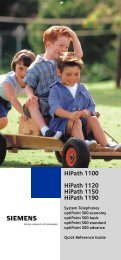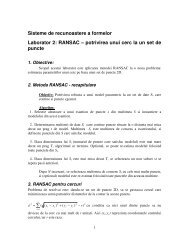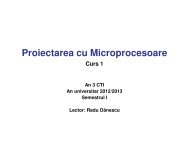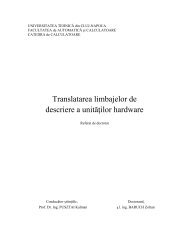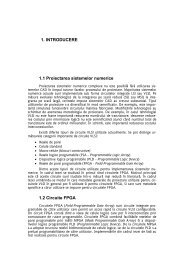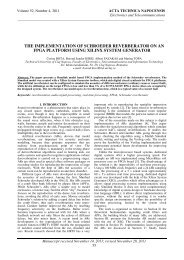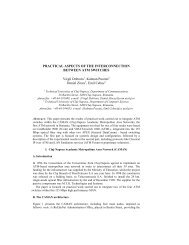LTE Emulator
LTE Emulator
LTE Emulator
Create successful ePaper yourself
Turn your PDF publications into a flip-book with our unique Google optimized e-Paper software.
TUCN – Data Transmission Laboratory<br />
24<br />
data, but only the modification of the coding rate and the inclusion of the<br />
retransmission index (number) in the computation of the final statistics.<br />
o generation of the instantaneous bit rate and bit error probability statistics (distributions)<br />
based on the data obtained after the demodulation/decoding and HARQ processes;<br />
Figure 5.3. presents schematically the processing chain performed by the simulator, briefly<br />
described in the previous points.<br />
5.2.1. Allocation of radio resources. The scheduler block<br />
The radio resource allocation to a certain user is realized using 4 parameters, namely:<br />
o the value of the instantaneous signal to noise ratio, which is imposed by the fading (large<br />
scale and small scale) and the background noise/interference;<br />
o priority of the service offered to the considered user;<br />
o average bit rate associated to the service offered to the user;<br />
o coding rate imposed by the HARQ process, and, consequently, generates the increased<br />
radio resources allocated for the transmission of the imposed instantaneous bit rate.<br />
Fig. 5.3. Processing chain performed<br />
by the simulation program.<br />
The radio resource allocation (the scheduling process) can not be performed separately for



